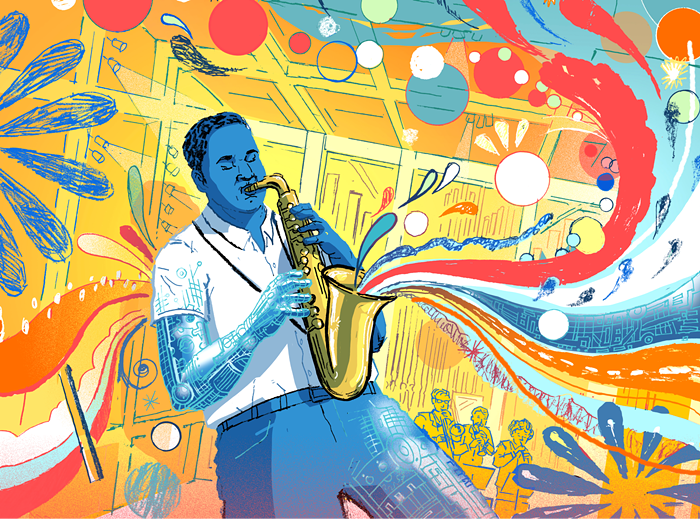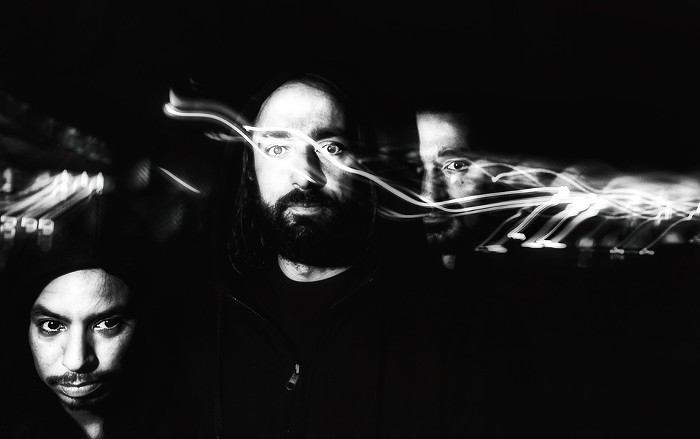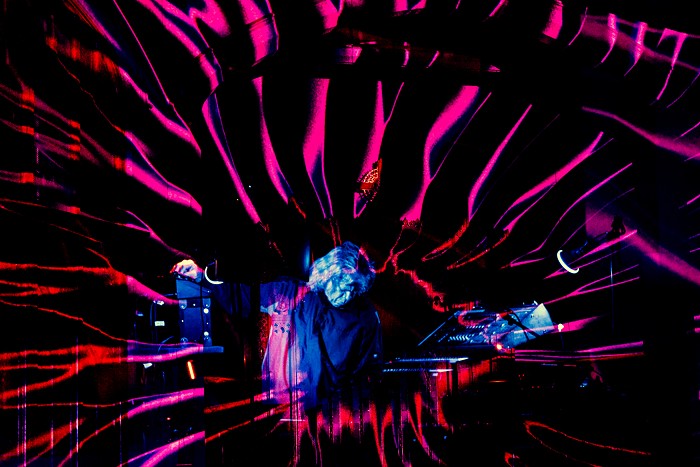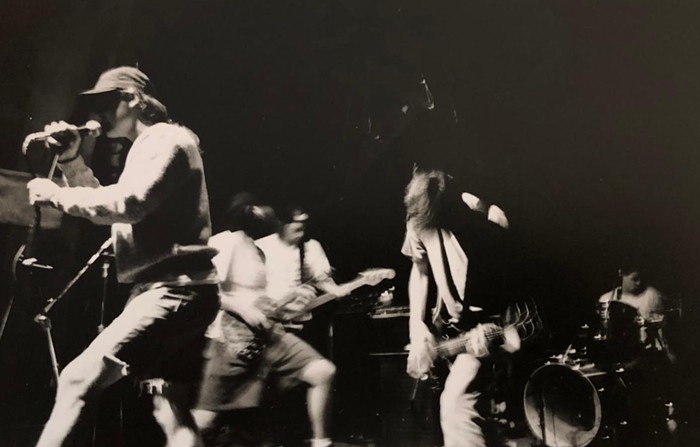They all say the same thing: We want to be more accessible. This music is universal. We listen to hiphop, too! This is your symphony. Then they take the stage and change nothing, bowing to the usual, deadly respectability that plagues classical concert halls.
This is what 2,500 people instinctively know when we take our seats at Benaroya Hall on Saturday night. It's a sold-out show and we have high hopes; we're here to witness a new beginning. I want a new beginning that's old—that goes back to the days when hot dog and beer vendors walked the aisles at orchestra concerts, before Richard Wagner got medieval on everyone in the 19th century and turned off the lights, put the hush on, made people mortally afraid to cough or laugh or show any other signs of life.
Seattle Symphony hasn't had a new artistic director in almost 30 years, and the last one (Gerard Schwarz) became famous for his complacency. Now comes Ludovic Morlot, a 37-year-old Frenchman with feathered hair and puppy-dog eyes who says he stopped growing in the fifth grade. (Morlot is pronounced "more-low.") He talks an especially good game—he says come once and we'll make you want to return. But we've all been burned in the past.
I've brought with me a musician who has no particular love for symphony orchestras—groups, she describes, "where everybody's doing what they're told by the guy in the middle." She studied classical piano but rejected it; she became an improviser who works in collaborative groups with voice and electronics.
"Where's my kielbasa?" she whispers halfway through the concert. Polka is happening. The orchestra is playing a cello concerto by Friedrich Gulda, a postmodern composer who sometimes performed in the nude and was nicknamed "the terrorist pianist."
Eventually, Gulda's unfamiliar music has careened into some unfortunate territory, from "neutered rock combo," as my friend describes it, to, now, the polka. There is a man playing a Fender Stratocaster with a whammy bar onstage. The drummer's head has dropped to the side like he's dying of boredom; he is, hilariously, hemmed in by Plexiglas walls—such a fastidious classical move. We can't help laughing, and our seat backs are shaking. The transitions are so absurd, I think the composer must have wanted us to laugh. Morlot's conducting at such a fever pitch that he jumps, getting actual air time, at one point. I can almost smell the hot dog vendors in the aisles. When Joshua Roman, the cellist, comes back for his encore, Morlot sneaks back onstage and slouches behind the xylophone just to hear it.
He's started to win us over.
Next is Gershwin's An American in Paris. Because I got to see the orchestra rehearse a few days before, I already know what Morlot wants. "It has to swing!" he kept saying at the rehearsal—and not in the tragic classical-musician-impersonating-jazz swing, but to really ride its own rhythm. He wanted the piece to show its modern angles, to be fine-grained, not to congeal into a wall of sentimental sound, which too often happens with Gershwin.
On opening night, they nail it. "That was the best Gershwin I've ever heard," my friend announces immediately after the last note. "It was like a time machine, back to when Gershwin was new and fresh."
The last piece of the night is a risky one. Boléro, a number written by Maurice Ravel in 1928, repeats the same phrase for 15 straight minutes, getting louder and louder—and it's difficult not to make the audience feel that, well... you're just waiting for him to finish.
Things begin well. You can see the string players plucking, but you can't hear a thing—then gradually the sound arises out of nothing. It's a great trick. Then come repeated reminders that Seattle Symphony's woodwinds are outstanding. At about the halfway point, Morlot unceremoniously steps off the podium and walks slowly to the middle of the violin section. He sits down, picks up a violin, and joins in. He's part of them now. There's nobody leading the orchestra. Nothing in the score calls for this, and I've never seen it done before.
Things begin to fall apart a little. Morlot keeps playing anonymously, just one of the bowing, sawing suits. It's tense. Can the orchestra make it all the way to the crescendo without a conductor? The music balances on a wire. Minutes go by. It's a trust game. People in the audience lean forward to see what's going to happen.
Finally, slowly, Morlot puts the violin down, rises, and makes his way back to the podium. He shakes it off. He raises his hands. And the players respond like a lover delayed. They'll do anything for him now.
It is the best Boléro I've ever seen. And it's a thrilling lesson in leadership.
"Okay," my friend says, "I'm in love."
Every night cannot be like the first. But look: It matters, musically, that the Seattle Symphony and Ludovic Morlot are having such a palpable honeymoon. Chemistry is the element of conducting that nobody really understands, not even the players—and without which nothing can get off the ground.
When I meet Morlot in his still-empty office for an earlier interview, it contains just a desk, two chairs (including his), a grand piano, and bookshelves empty except for some speakers still wearing torn-open plastic covers—as if he needed to hear something so badly, he couldn't be bothered to fully unpack them. How would players who know Morlot describe his working style? I ask.
"Empathic," he says.
Empathic?
"EMPHATIC!" he says. I have misheard him.
But after the first concert, I wonder whether he's both. Opening night, he thanked the stage crew—called out all their names individually—something no conductor ever does.
Later, at the free Day of Music event the morning after the opening concert, a little boy tells Morlot he wants to be a drummer, and Morlot immediately responds, without awkwardness, Leonard Bernstein–style: "Give me your address and you will get a little drum at your house next week."
The whole symphony is being revitalized. The committee that hired Morlot is led by board chair Leslie Chihuly, who sports a calming, youthful elegance. A very pleasant Englishman named Simon Woods became executive director just a few months ago. Auditions for concertmaster (the violinist who sits directly to the conductor's left) are under way; the orchestra has a new principal flute, Demarre McGill, and a new principal cello, Efe Baltacigil. In addition to holding open rehearsals throughout the season, the symphony announced last week that every paying adult at a concert is entitled to two free companion tickets for kids between the ages of 8 and 18.
That's not just talk.
Morlot's initial contract is for six years. (In June, he was also appointed music director of La Monnaie opera house in Brussels; he'll do both. Doubling up is a logistical nightmare, but common among conductors.) These are his first music directorships, but he's guest-conducted around the world and worked with mentors like the titan James Levine in Boston.
Morlot grew up in Lyon, the middle of five siblings. His grandfather picked up a violin in a German prison camp and eventually brought the love of it to his grandson, who entered the conservatory at age 8. Now, Morlot has two daughters of his own, Nora and Iman, and his wife, Ghizlane, is a landscape designer. (Ghizlane was the dark-haired beauty in the most daring dress at the gala. It was a studded, shiny, tight, tangerine taffeta confection involving significant cleavage and reportedly was designed by art students. Go.)
Morlot likes to remind people that orchestral musicians are performing artists who start new every time—there's a little John Cage in him. A sense of spontaneity comes out in his physical gestures. His first appearance onstage opening night was slightly Chaplinesque; he stumbled as if he'd been pushed through the backstage door into the public eye.
On the day of our interview, he's wearing jeans and a navy blue polo shirt—the same thing he wore onstage at a casual performance during Bumbershoot. That night, Seth Krimsky, the orchestra's principal bassoonist, plugged into a bunch of pedals and improvised trippily with himself, as though there were a dozen plugged-in bassoonists up there. The man was giddy. Later, onstage, a double-bass player joked and laughed about failure while failing—admittedly—to play a difficult piece perfectly. Classical musicians having fun: Just don't tell the authorities.
Things overheard in the lobby after the opening:
"He's a little bit goofy, a little bit sexy" and "I've never had so much fun at the symphony."
I'm not the only one going back. ![]()
This story has been updated since its original publication.



















